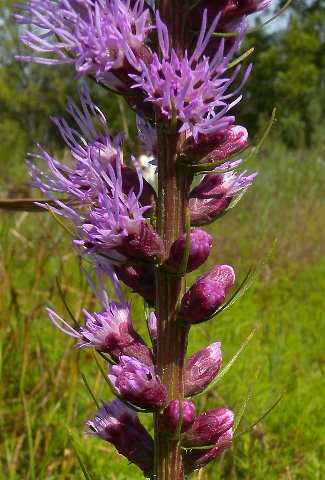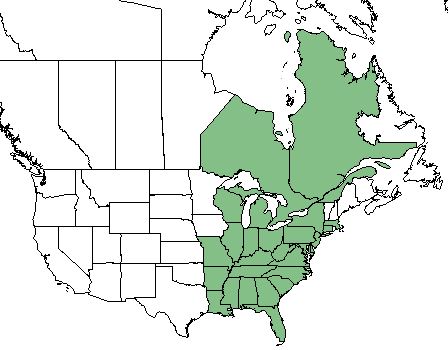Difference between revisions of "Liatris spicata"
| Line 1: | Line 1: | ||
{{italic title}} | {{italic title}} | ||
| − | Common name: | + | Common name: dense blazing star <ref name= "USDA Plant Database"/>, florist's gayfeather <ref name= "Weakley 2015"/> |
<!-- Get the taxonomy information from the NRCS Plants database --> | <!-- Get the taxonomy information from the NRCS Plants database --> | ||
{{taxobox | {{taxobox | ||
Revision as of 09:38, 7 June 2018
Common name: dense blazing star [1], florist's gayfeather [2]
| Liatris spicata | |
|---|---|

| |
| Photo by the Illinois Wildflowers Database | |
| Scientific classification | |
| Kingdom: | Plantae |
| Division: | Magnoliophyta - Flowering plants |
| Class: | Magnoliopsida - Dicots |
| Order: | Asterales |
| Family: | Asteraceae |
| Genus: | Liatris |
| Species: | L. spicata |
| Binomial name | |
| Liatris spicata L. | |

| |
| Natural range of Liatris spicata from USDA NRCS Plants Database. | |
Contents
Taxonomic Notes
Synonyms: none
Varieties: Liatris spicata (Linnaeus) Willdenow var. resinosa (Nuttall) Gaiser; Liatris spicata (Linnaeus) Willdenow var. spicata
Description
L. spicata is a perennial forb/herb of the Asteraceae native to North America and Canada. [1]
Distribution
L. spicata is found in the southeastern corner of the United States from Arkansas to Massachusetts, as well as the Ontario and Quebec regions of Canada. [1]
Ecology
Habitat
L. spicata is found in bogs, wet longleaf pine savannas, seepages, prairies, roadsides, and grassy balds. [2]
Phenology
L. spicata flowers in July, September, and October. [3]
Fire ecology
L. spicata is not fire resistant, but has high fire tolerance. [1]
Use by animals
L. spicata has low palatability for browsing and grazing animals. [1]
Conservation and Management
Cultivation and restoration
Photo Gallery
References and notes
- ↑ 1.0 1.1 1.2 1.3 1.4 USDA Plant Database https://plants.usda.gov/core/profile?symbol=LISP
- ↑ 2.0 2.1 Weakley, A. S. (2015). Flora of the Southern and Mid-Atlantic States. Chapel Hill, NC, University of North Carolina Herbarium.
- ↑ PanFlora Author: Gil Nelson URL: http://www.gilnelson.com/PanFlora/ Date Accessed: 5/24/18